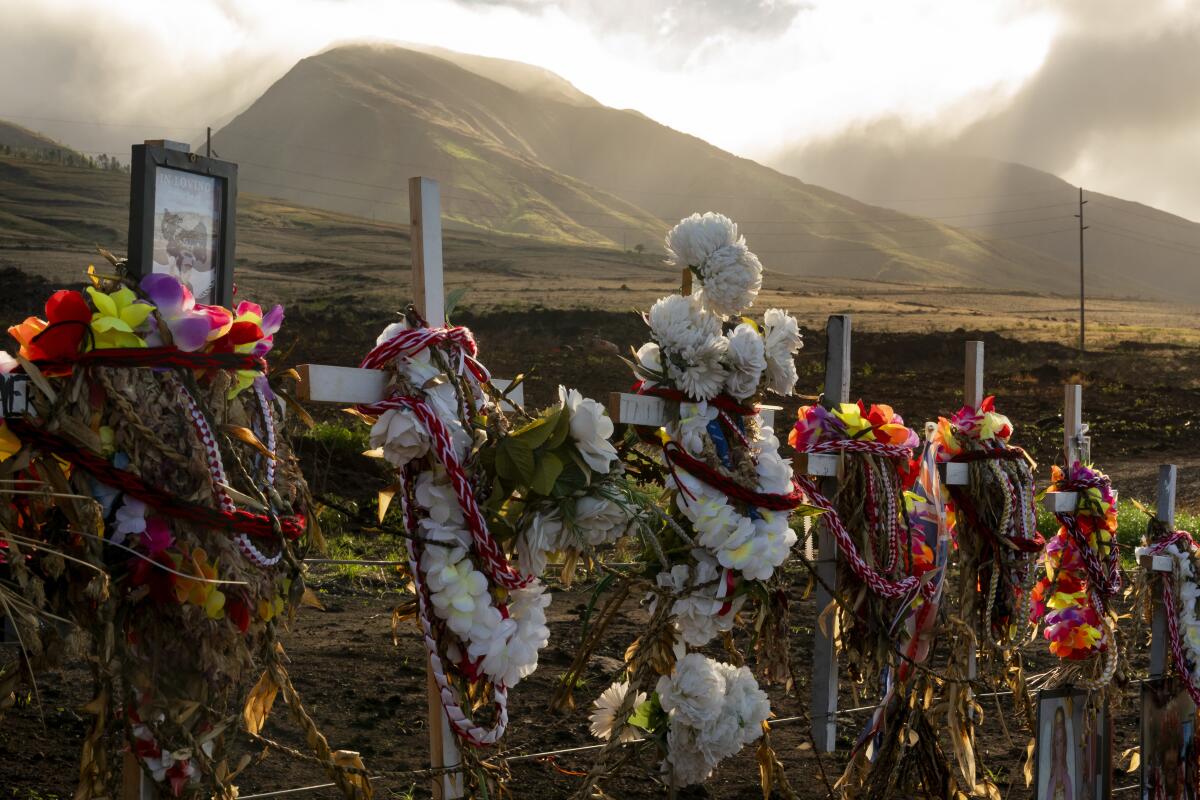Opinion: Did Hawaii just pave the way for court enforcement of Californiaâs climate promises?

This week, 13 young Hawaiian plaintiffs were set to take the stateâs Department of Transportation to trial for failing to make real headway on reducing planet-warming pollution. Instead, on the eve of their court date, the youths inked a groundbreaking settlement with Hawaiiâs governor and ushered in a new phase of climate litigation.
The resulting deal will accelerate Hawaiiâs progress toward a zero-emission transportation system, and it could serve as a road map for other advocates looking to gain ground on urgent climate goals.
Several states â including Alaska, Florida, Utah and Virginia â face similar lawsuits by young people over their alleged failures to reduce greenhouse gas emissions. Unlike their red-state counterparts, officials in ocean-blue Hawaii have tried to lead on climate. They have crafted ambitious laws to mitigate climate change, setting long-term targets for reducing greenhouse gas pollution.
In addition to a statewide 2045 carbon neutrality target, the state Legislature enacted a 2030 emissions reduction goal and aimed specifically to decarbonize the transportation sector, the largest source of climate emissions in Hawaii. The stateâs 2050 sustainability plan promises a transition of the entire state fleet to zero-emission vehicles by 2035.
But ensuring implementation of such promises is hard â and made that much harder by a lack of intermediate targets along the way to distant goals. The Hawaii plaintiffs argued that state officials have ignored their own goals by failing to take meaningful steps to reduce climate emissions from transportation sources. They contended that the state thereby breached its constitutional duty to protect natural resources from climate change and disasters such as last yearâs unprecedented Maui wildfires. Their lawsuit alleged that the defendants âimpaired and infringed upon youth plaintiffsâ right to a clean and healthful environment, including the right to a life-sustaining climate system.ââŻ
In that way, the Hawaii lawsuit focused not on a wholesale failure to adopt meaningful climate policies but on nitty-gritty questions about follow-through. The issue at trial would not have been whether officials made good laws but rather what happened after they did. In an age of proliferating climate pledges in liberal-leaning states such as California, New York and Hawaii, itâs a profound and important question.
The resulting settlement answers that question by providing benchmarks for a greenhouse gas reduction plan that will be overseen and enforced by a court through 2045 or until Hawaii achieves its zero-emission goal, âwhichever is earlier.â
Under the agreement, the state must set interim decarbonization targets for the transportation sector in 2030, 2035 and 2040; report annually on its progress toward those targets; reform elements of the Transportation Departmentâs planning and budgeting to align them with the stateâs climate goals; and spend millions of dollars in the short term on low-carbon infrastructure such as electric vehicle charging stations and bike lanes. The settlement also creates new leadership positions within the department charged with addressing climate change.
The settlement is far from a panacea. For example, it saves for another day the question of exactly how ambitious Hawaiiâs interim decarbonization targets should be.
Nevertheless, the deal is trailblazing in a few ways. First, âit shows other governments the benefits to working with youth, not against them,â said Andrea Rodgers of Our Childrenâs Trust, one of the public-interest law firms that represented the plaintiffs. âThis is the first time a government has decided to do that.ââŻ
As their lawsuit noted, the plaintiffs â surfers, divers, spearfishers and regenerative farmers among them â have suffered climate anxiety, disruption of traditional ways of life and, in some cases, destruction of their homes. Without even stepping foot in court, they more or less won the measure of justice they were seeking.
By deciding to settle with the youths rather than go to trial, Hawaii Gov. Josh Green (yes, Green is his real name!) set a higher bar for what can be accomplished by a state leader who takes climate change and its consequences seriously. Itâs a dramatic contrast with climate change deniers such as Florida Gov. Ron DeSantis.
The outcome also offers a template for others seeking to ensure that climate pledges are realized. That can be hard work. As Hawaiiâs government maintained before the settlement, long-term climate goals provide few footholds for todayâs litigants. A 2045 carbon neutrality goal, for example, creates a host of challenges by failing to specify which sectors must reduce emissions, by how much and by what dates. But the big-picture question of how to ensure that long-term climate goals have teeth could not be more important.
Democratic-controlled states such as California have acted as climate policy bellwethers partly by enacting ambitious climate goals. Now we have an example of how to turn such lofty pledges into court-enforced action to decarbonize a critically important sector.
This case serves as a resounding endorsement of the courtsâ capacity to address climate change. Many defendants facing climate lawsuits â notably including Hawaii officials in the earlier stages of this case â often protest that climate change policy should be made by legislatures, not judges. This landmark settlement demonstrates that the courts can hold decision-makers accountable if they fail to live up to their promises.
Cara Horowitz is the executive director of the Emmett Institute on Climate Change and the Environment at UCLA School of Law. Evan George is the instituteâs communications director.
More to Read
A cure for the common opinion
Get thought-provoking perspectives with our weekly newsletter.
You may occasionally receive promotional content from the Los Angeles Times.










